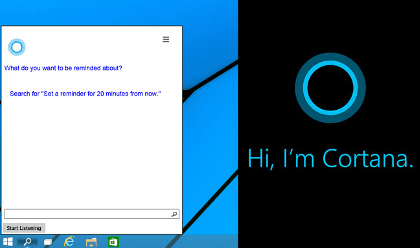
Click to learn more about author Samuel Bocetta.
Ever since the first crude cinematic robot first arrived on the scene in the 1927 movie Metropolis, humans have been fixated on the fear that they would come to rue the day artificial intelligence (AI) was summoned into existence and that, eventually, the masters would become slaves to these superior automated brains.
But from the vantage point of nearly a full century later, it seems like there might be another way this could go in which humans and AI — and AI’s close cousin machine learning (ML) — might find a way forward with a symbiotic relationship that stands to benefit humanity and not end in the subjugation or ultimate destruction of the human race.
Maybe we’ve come to the point in time when AI and human operators can combine forces to build and train better robots.
The AI Status Quo

While all but perhaps the guy living under a rock in a Geico commercial realize that we’re living on the gentle front slope of what is sure to become a steep curve when it comes to the effect of artificial intelligence on our lives, let’s take a quick look at how this exciting technology has made things better already.
AI can do these things right now:
- Speed up the disease diagnosis process
- Translate languages without human assistance
- Provide customer service (chatbots)
- Drive a car statistically safer than a human
- Do legal research
- Trade stocks
- Beat humans at Texas Hold‘em Poker
Additionally, AI is the engine behind the insanely popular app TikTok, which has surpassed 33 million downloads in a single quarter. If you need more evidence of the talents AI offers before proceeding, here is a more in-depth recounting.
This rapid leveling up of the AI skillset has long been a source of frustration for workers employed in certain industries, based on a fear that smart machines are being inadvertently (or maybe purposefully) groomed to replace humans. But maybe that’s not where we’re headed.
Augment Rather Than Replace
Here’s one reality we might see. AI is a tool, and it has shown itself to be the most helpful, responsive toolset imaginable. It allows the human race to be more productive than ever.
While it’s difficult to pinpoint precisely how AI-powered inventions will avail themselves in the coming years, it’s not too much of a stretch to surmise that they will augment, complement, and extend human capabilities rather than obliterate and replace them.
Need proof? Let’s take a look at Harvard Business Review (HBR) research, which studied human and machine interaction in 1,500 companies.
Here are the key takeaways from this research:
- Companies that displace humans with machines see only short-term productivity gains
- The most notable productivity improvements were observed in workplaces, where humans and robots worked together.
If this pattern holds true as we move into the future, it should allay at least some of humanity’s fears of being supplanted by a race of superior mechanical beings. The trick then becomes figuring out exactly how humans and robots should work together for the greatest productivity. After all, it’s not a naturally symbiotic relationship. Here are the conclusions from the HBR research.

Task #1: Be Able to Explain Your Robot’s Decision
There is a very murky area that includes situations where human insight is required to describe to a layperson how a machine came to any particular conclusion. Obviously, your average algorithm is a bit lost here and can only regurgitate calculations to try and explain how it applied “intuition” to any particular situation.
When it comes to decisions that might have legal ramifications, this is a big deal.
For example, an autonomous car might absolutely make the safest decisions and calculate every angle properly but still end up in a collision because sometimes it’s simply unavoidable. Considering our litigious society, you can bet someone will be sued, so it takes a human handler to explain to a judge or jury how the algorithm made the best decision under the circumstances since artificial intelligence can’t defend itself in court — yet.
We spend so much time obsessing over areas where human employment will be reduced by AI that we forget to take note of where jobs will be added. The HBR report predicts that helping AI administer the new GDPR regulations will create 75,000 new jobs.
Task #2: Train Your Robot
Anyone who wants to remain anonymous online would be wise to follow measures such as using an HTTPS connection, avoiding public wi-fi, always utilizing a VPN, and opting for web browsers that make privacy a priority. Unfortunately, machines have proven they can track, record, and sift through unimaginable data sets, so even the above privacy measures may not be good enough.
However, the good news is that none of this happens through the machine’s own prerogative. The machine must be guided and trained by humans. Typically, this begins with the introduction of large data sets.
Machine learning algorithms go to work “studying” this material related to what their ultimate job will be. If the job involves detecting diseases, the data will include reams of information that provide background on the common characteristics of a particular disease and, just as importantly, clues for ruling out others.
Additionally, the machine has to be trained in the proper way to interact with humans, both the ones doing the training and those it will come into contact with (such as customers or clients) during the course of going about its duties. For example, the Microsoft personal assistant known as Cortana was trained into its personality (confident, helpful, but not bossy) through endless interactions with a novelist, a playwright, and a poet.
Task #3: Sustain Your Robot’s Work
As far back as 1940, renowned science fiction writer, Isaac Asimov, created a set of three rules he called the Laws of Robotics. The first states: “A robot may not injure a human being or, through inaction, allow a human being to come to harm.”
If we can set aside the fear that AI is rapidly becoming one of the greatest threats to online privacy through personal assistants like Alexa and the aforementioned Cortana, expect continued employment growth in the field of robot safety engineers, people who will be tasked with making sure the AI-powered workforce functions properly and safely.
Part of this job is to observe AI in action and try to prevent problems before they cause harm to people or property. We go back to our example above of an autonomous car that causes a fatal accident. Through careful observation of the real-world manifestation of the training process, such outcomes can probably never be prevented but at least minimized to the point that having a robot behind the wheel is statistically safer than a human driver.
Final Thoughts
In order to enjoy a fully beneficial and collaborative relationship with AI, companies are going to have to learn to do things differently and not just look at machines as an alternative workforce that doesn’t complain or take long lunches and sick days. Training a chatbot to provide better customer service is a different sort of beast – almost like working with a child.
Despite popular terminology, this new generation of machines isn’t smart. They are able to process immense amounts of inputted data, though, in a short period of time, and arrive at a conclusion that is supported by the preponderance of the evidence. This is a good thing for decision-makers who can overcome natural paranoia against the “new world order” and accept the reality that robots are simply a very, very useful tool, like a hammer or power saw. You don’t see carpenters turning up their noses at those.
